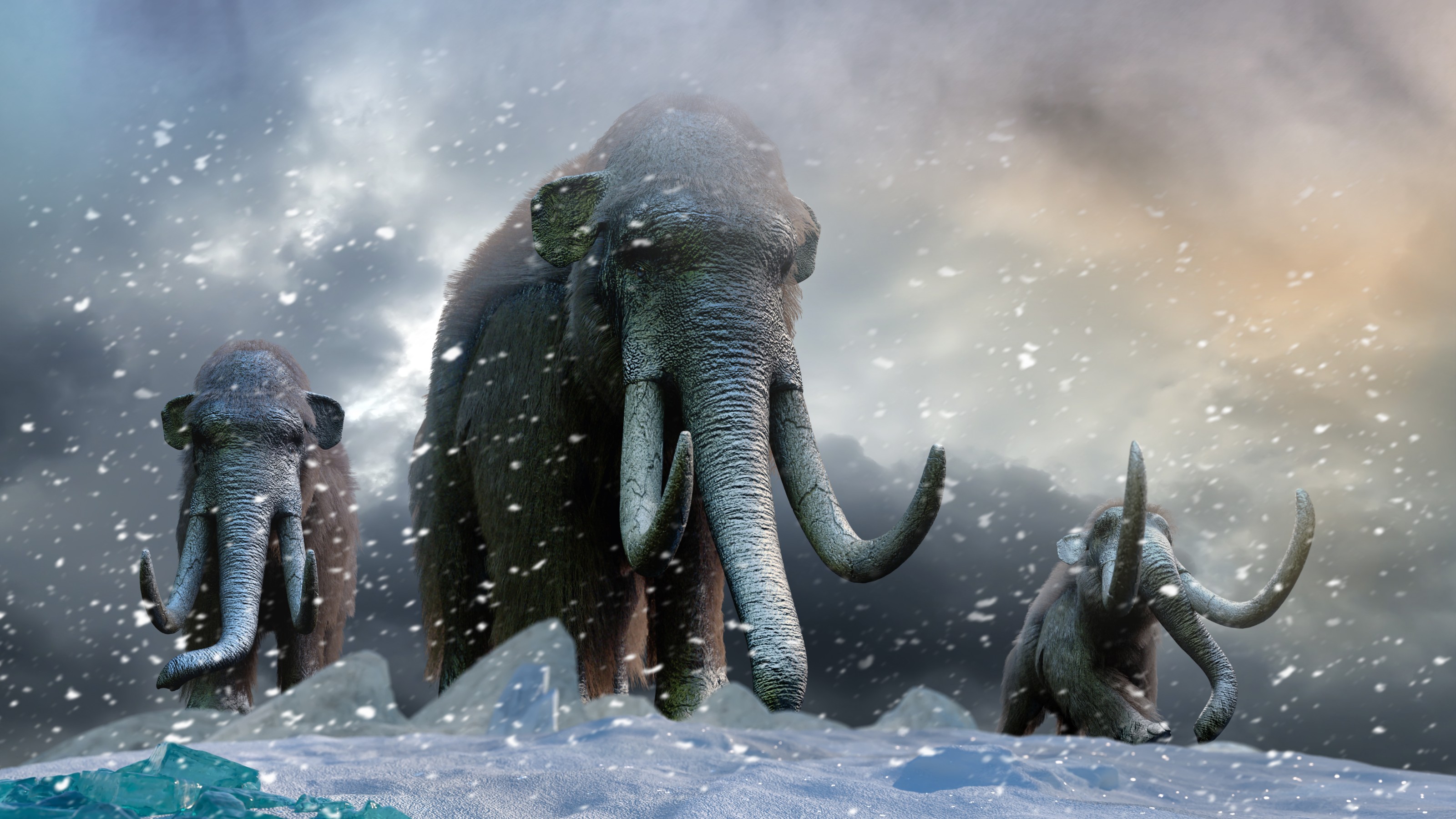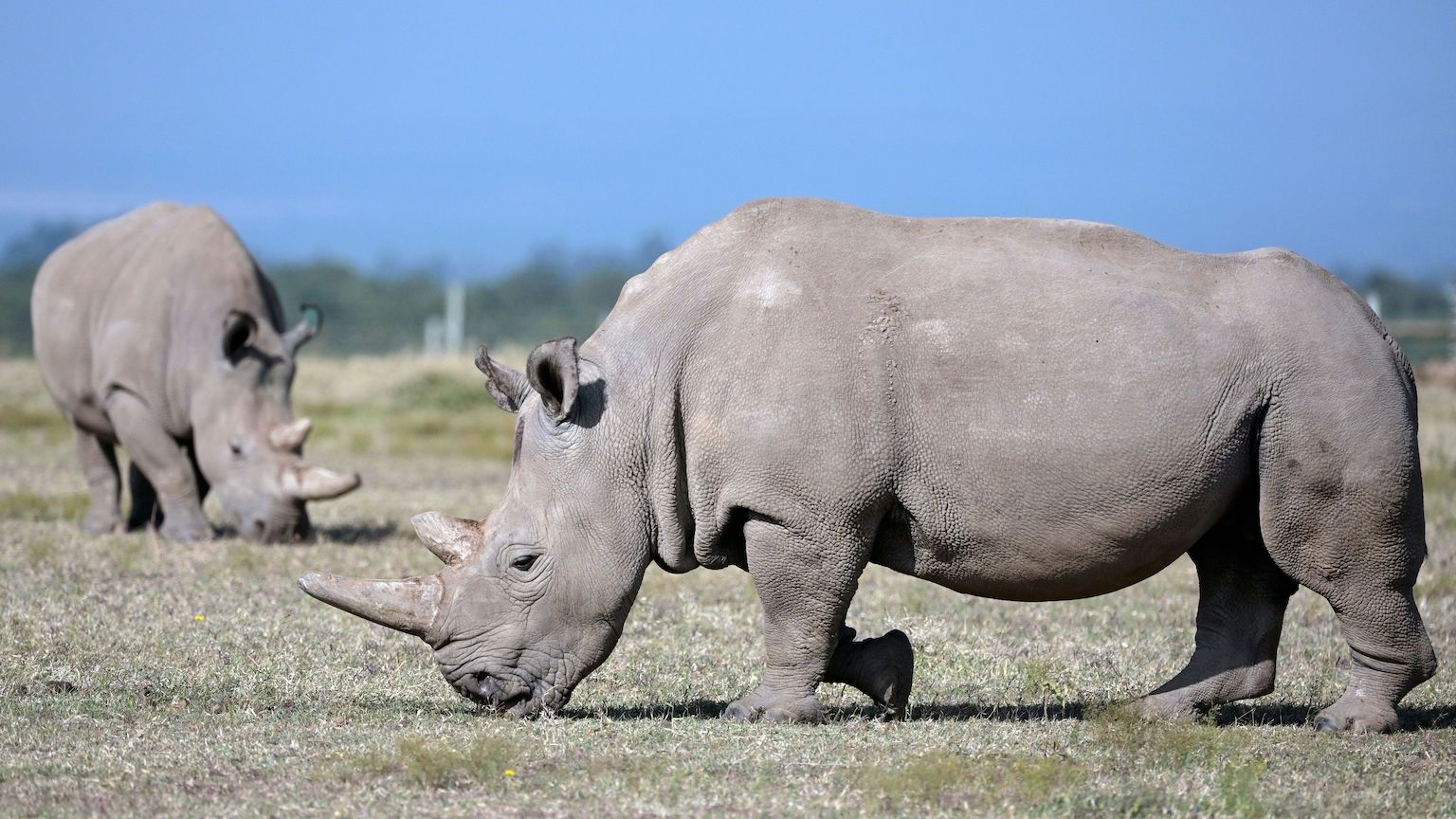CRISPR is helping “de-extinct” the Tasmanian tiger
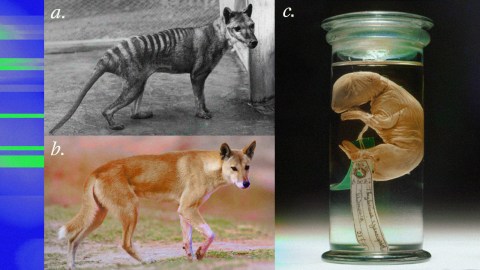
- The thylacine, or “Tasmanian tiger,” went extinct in 1936, causing a domino effect in Australia’s ecosystem.
- Researchers are exploring the possibility of “de-extincting” the Tasmanian tiger, though the goal is not to produce an exact replica, which is likely impossible.
- To assist, scientists have turned to the fat-tailed dunnart, a tiny, mouse-sized, carnivorous marsupial.
This article is an installment of Future Explored, a weekly guide to world-changing technology. You can get stories like this one straight to your inbox every Thursday morning by subscribing here.
Extinction is a regular part of nature. An estimated 99% of all species that have existed on Earth have gone the way of the dodo, sometimes because a fitter competitor came along or their environment changed (often because of humans) and they couldn’t adapt.
While life can go on relatively unchanged after the extinction of some species, the loss of a keystone species — one that plays a significant role in its environment — can upend an ecosystem.
Now, researchers exploring the idea of “de-extinction” believe that science might be able to intervene and restore the balance.
Australia’s loss
The thylacine, or “Tasmanian tiger,” is a prime example of what can happen when a keystone species goes extinct — when these carnivorous marsupials, which look like dogs, but with kangaroo-like pouches and tiger stripes, went extinct in 1936, it had a domino effect in Australia.
“We lost this incredibly unique animal that sat right at the top of a food chain,” Andrew Pask, head of the University of Melbourne’s Thylacine Integrated Genetic Restoration Research (TIGRR) Lab, told the Dallas Morning News in 2022.
“It does destabilize all the species that sit beneath them in that ecosystem,” he continued. “So there’s already been a lot of ripple effects that have happened as a result of the loss of the thylacine.”
One example of those effects can be seen in the Tasmanian devil population, according to Pask — a facial tumor disease that nearly wiped out the species over the past few decades might not have spread so widely had thylacines been around to kill the infected and weak animals.
“We lost this incredibly unique animal that sat right at the top of a food chain.”
ANDREW PASK
Between de-extinction and creation
Pask is now working with Colossal Biosciences — a company focused on using genetic engineering to resurrect extinct species — to explore the possibility of “de-extincting” the Tasmanian tiger.
The goal wouldn’t be to produce an exact replica of the animal — that’s likely impossible — but to create a proxy that could take its place in the Australian ecosystem.
“We think that bringing that animal back to Tasmania would have incredible benefits, not just for the Tasmanian devil population but for all sorts of unforeseen parts of that ecosystem,” Pask told Al Jazeera.
Colossal, which is also working to resurrect the woolly mammoth due to its potential to reduce permafrost thawing in Siberia, believes the Tasmanian tiger is particularly well suited to de-extinction research.
“The thylacine is a great candidate for de-extinction because it only went extinct in 1936 due to human hunting and the ecosystem we are looking to return it to is still intact,” Ben Lamm, Colossal’s co-founder and CEO, told Discovery.
“Furthermore, we have incredible tissue samples and genomes assembled as well as many additional pelts that are being sequenced for population genomics studies,” he continued.
“We are essentially engineering our dunnart cell to become a Tasmanian tiger cell.”
ANDREW PASK
That’s the first step in bringing the Tasmanian tiger (or any species) back from extinction, according to Colossal: you need to sequence its genome, the complete collection of DNA that can be found in almost every cell in its body.
Pask published the first thylacine genome in 2018, after two decades of work, using DNA extracted from a 108-year-old thylacine preserved at an Australian museum, and his team is still working to improve upon that draft, filling in missing gaps as new technology allows.
The next step is to sequence the genomes of living animals similar to the target species to find the one that’s closest to it genetically. Surprisingly, that turned out to the fat-tailed dunnart, a tiny, mouse-sized, carnivorous marsupial.
“We then take living cells from our dunnart and edit their DNA every place where it differs from the thylacine,” Pask told Discovery. “We are essentially engineering our dunnart cell to become a Tasmanian tiger cell.”
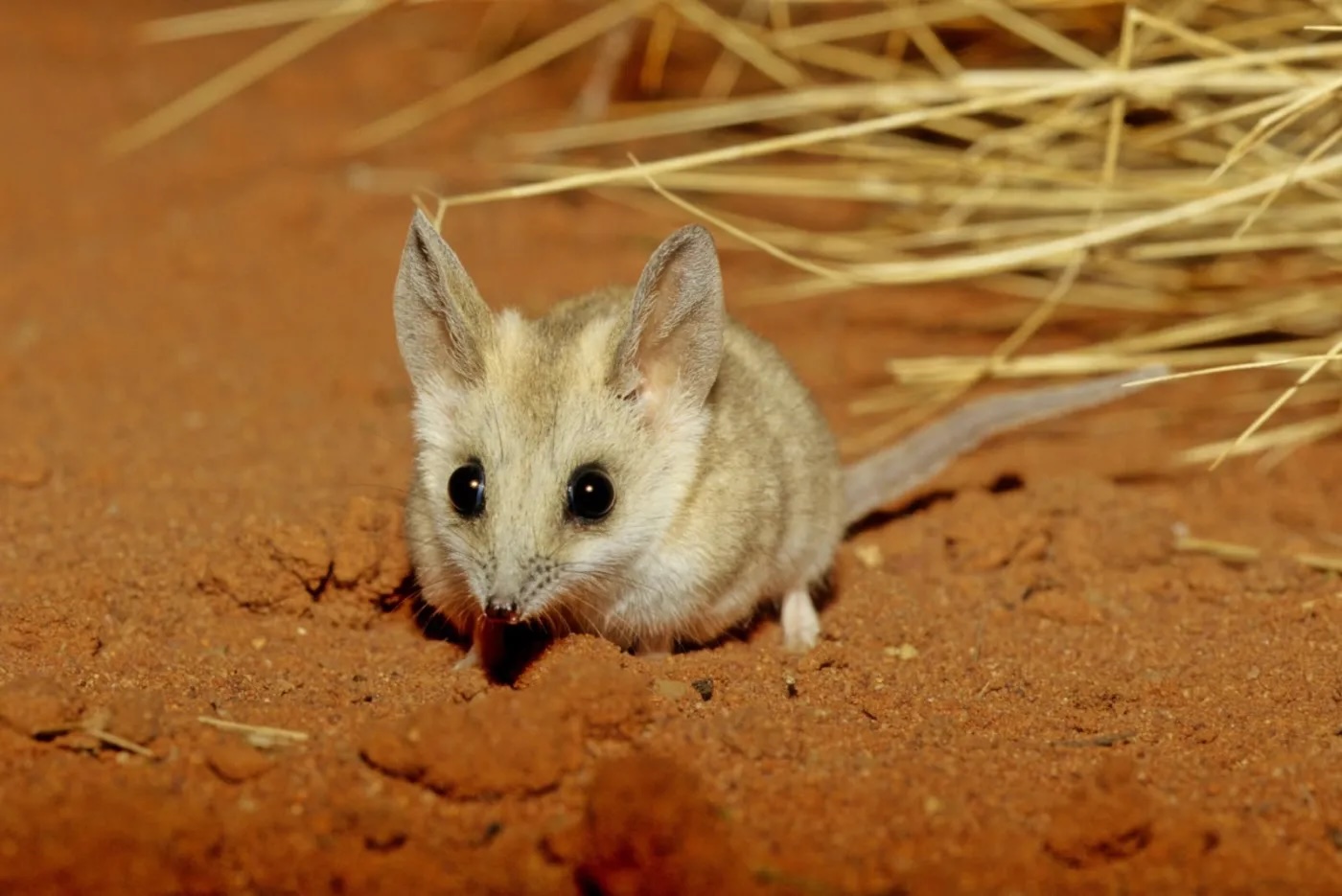
The nucleus from a thylacine-like cell can then be transferred into a dunnart egg cell to create an embryo (that process, somatic cell nuclear transfer, is the classic technique for cloning animals, like Dolly the sheep).
Once the embryo is ready, it can be implanted into a surrogate mother. Because thylacines are (or were) only slightly larger than a grain of rice when they’re born, a dunnart could plausibly be used for this.
After birth, the babies would be transferred to an artificial marsupial pouch designed to mimic the one a real mother thylacine would have had, until they can survive outside of it.
What’s new?
That’s the goal, at least — Colossal researchers are still in the beginning of the process where they try to make a dunnart genome as thylacine-like as possible. New research from the SciLifeLab research center and Center for Paleogenetics in Sweden could help there.
The group has published a study in the journal Genome Research detailing how it recovered and sequenced RNA from a room-temperature Tasmanian tiger specimen at the Swedish Museum of Natural History in Stockholm.
“Most researchers have thought that RNA would only survive for a very short time — like days or weeks — at room temperature,” researcher Love Dalén told Reuters. “This is likely true when samples are wet or moist, but apparently not the case when they are dried.”
“Resurrecting the Tasmanian tiger… will require a deep knowledge of both the genome and transcriptome regulation.”
EMILIO MÁRMOL
RNA is a nucleic acid, like DNA, and the major type — messenger RNA — plays a key role in turning the instructions coded in DNA into actual proteins.
While practically every cell in an animal contains the same genome, the collection of mRNA in a cell — called its “transcriptome” — can vary widely between cells, depending on their role in the body.
The Swedish team has produced transcriptomes for thylacine skin and skeletal muscle tissues, and while they aren’t working to resurrect the species, they believe their research could be useful for de-extinction efforts.
“Resurrecting the Tasmanian tiger or the woolly mammoth is not a trivial task, and will require a deep knowledge of both the genome and transcriptome regulation of such renowned species, something that only now is starting to be revealed,” said lead author Emilio Mármol.
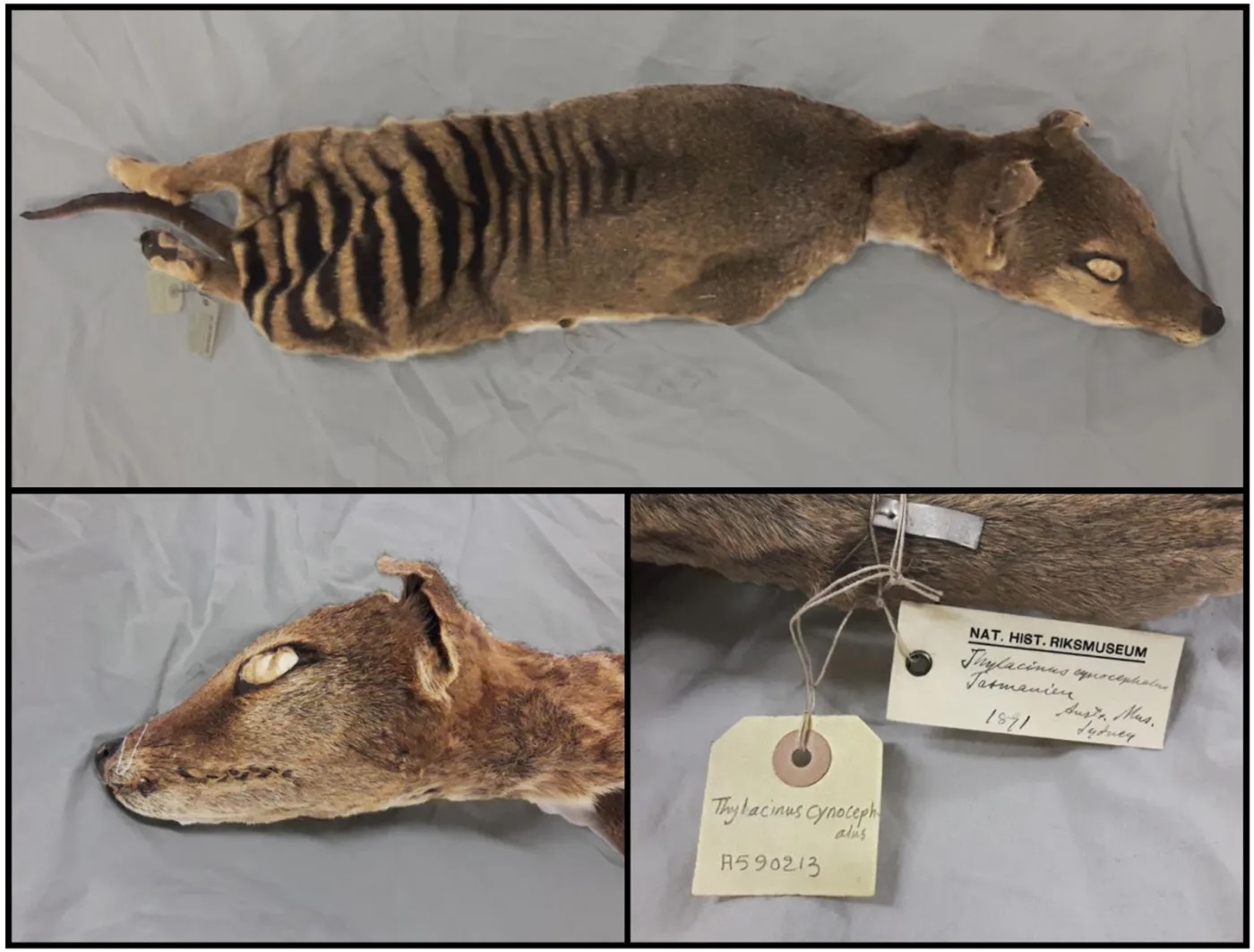
Looking ahead
The thylacine isn’t going to be resurrected overnight — the University of Melbourne’s Pask told Al Jazeera he believes it could take his team until 2033 to create their thylacine-like cell, and it may be decades after that before the first Tasmanian tiger proxy is born.
Colossal’s Lamm is far more optimistic — he thinks the first one could be birthed within the next five years.
If/when the researchers are able to produce thylacine proxies, they’ll study how groups of the animals fare in large areas of enclosed land over many years before considering their release into the wild.
A lot of time and money is going to go into the project, and it could be for naught.
Because the proxies won’t be exactly like the original species, they might not be able to fill the exact same role in the ecosystem, and they could end up with health issues that prevent them from being able to survive in the wild.
“The best thing we can do to protect our ecosystems is to prevent species extinctions.”
ANDREW PASK
Still, the work going into de-extincting the Tasmanian tiger could aid other conservation efforts — the Tasmanian devil is an endangered keystone species, and the artificial pouch Colossal is developing could be used to increase the survival rates for its joeys, for example.
Ultimately, Pask believes the potential benefits of returning the thylacine to Australia alone make the project worth the effort.
“The best thing we can do to protect our ecosystems is to prevent species extinctions,” said Pask. “But where a corner-stone species has been lost from that environment, the next best thing we can do is try to bring that animal back.”
This article was originally published by our sister site, Freethink.
